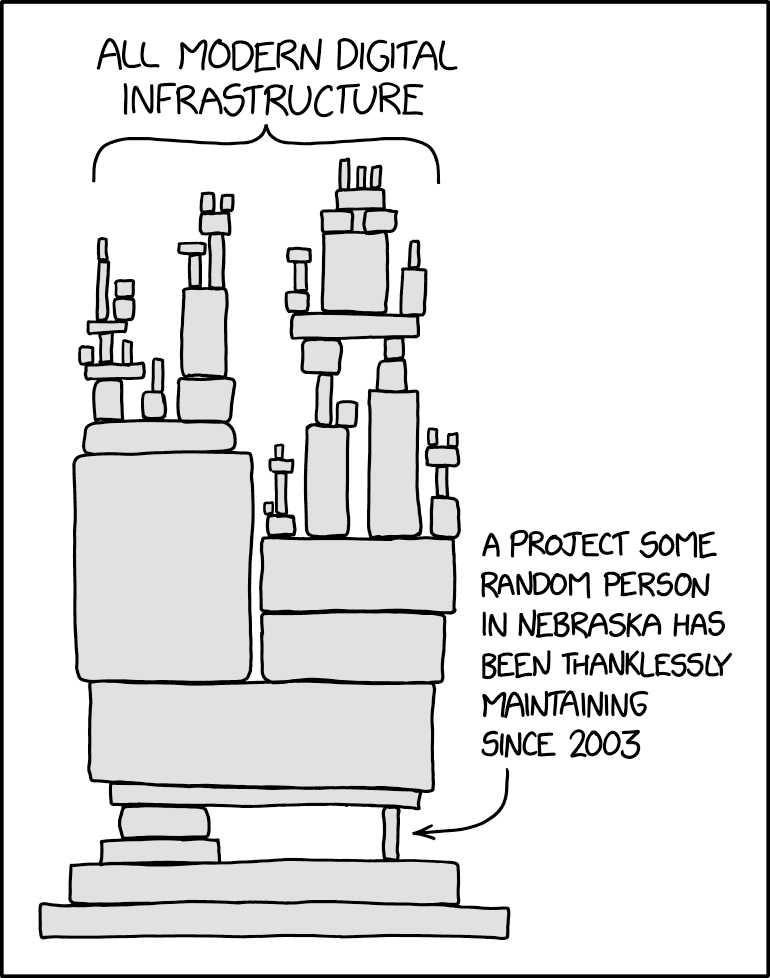

Tbf, this is something that only some distros do. Those distros should be reprimanded for handling home directories with the tmpfiles system, not systemd.


Tbf, this is something that only some distros do. Those distros should be reprimanded for handling home directories with the tmpfiles system, not systemd.


Some also do have specific use cases where they work really well, like Tea Tree Oil for acne and nail fungus or Peppermint oil for nausea. Most of them don’t do anything though.


50GB for the simple dual layer discs. You can theoretically reach 100GB with triple layer disks. The largest BDRip I have is 90GB for the Super Mario Bros. Movie.
Edit: UHD Blu-ray only supports dual and triple layer disks, not quad. Quad layer discs do exist though, with up to 128GB of capacity.
I’ve been using a Raspberry Pi 400 with LibreELEC installed. Mostly watch 4K HDR Blu-ray Remuxes that I have on another machine with a Samba server. Works really well for me.
Another good option would be to have Jellyfin on a media server and cast to the TV or use the TV directly if it has a Jellyfin app (I know there are official apps for Roku and WebOS (LG)). Jellyfin is similar to Plex but open-source and fully local (no need for an external account).
Of course, this is only works for local media. For streaming, just use a Chromecast.


A line of code that enables the backdoor was out present in the tarball. The actual code was obfuscated within an archive used for the unit testing.
I like the way kde does it. On first install it gives a slider with how much analytics you want to send. I just do all of it because I trust KDE, but it’s nice that it asks you. They probably have some pretty good data.


I imagine you could find a lot of options. Just a quick google turned up ThinStation, which only needs 30-50MB if storage and 64MB+ of RAM. A bit outdated, but should work fine.
You could also make your own OS with LFS if you want to optimize it to the extreme.


Chrome is actually doing a lot of work to display modern webpages though. A thin client only needs to receive a video stream and send inputs to a server. That can be done with an extremely low memory footprint. The Steam Link only had 512MB of RAM and it actually ran a steam client (which contains embedded chromium) instead of acting as a pure thin client.
That’s accurate, but anything above 0.5% is considered alcoholic in the US. There have been some small pushes to get the limit increased to 1.25%, which would make the usual levels of alcohol in normal kombucha legal, but I don’t think that’ll actually ever happen.
But then you have to restrict your userbase to over 21s and can’t sell it in many supermarkets. Without alcohol it can be sold as a soft drink.
I think the alcohol removal process increases the price quite a bit. Still very marked up though.


Oats don’t contain gluten
Not necessarily. I found out that bitwarden can generate a QR code that you just scan with your phone that allows your phone to act as a passkey, no browser support required. I was surprised when I discovered that. I had set up my phone as a passkey in Windows, and Windows can use phones as a passkey directly; on Linux that’s not supported so it just gave me a QR code that worked seamlessly. It’s not like a browser URL, but actually triggers the phone’s passkey authentication, kinda like QR codes for WiFi authentication. Pretty neat.


Yeah, it looks like that little Jenga block from the xkcd meme was XZ and a bunch of infrastructure is gonna have issues because of it.



To be fair, the backdoor only gets enabled when built as an RPM or Deb package, which doesn’t apply to Arch Linux, and also requires openSSH to be linked to liblzma, which is also not the case on Arch. So from what we know so far, the Arch packages should not have had the vulnerability. The risk now is whether there are other vulnerabilities or backdoors that haven’t been discovered which is why Arch made the update building directly from the git source instead of the known modified source tarball.


That wild. I can’t even do 4 reps of 45kg barbell overhead press. Then again I am quite a small person. I only weigh 57kg.


Why does it matter what the US says? Is the US allies or even friendly with either of these countries?


We also need support for the new protocol in Nvidia’s driver. Support will be available in driver 555, the beta of which will be released on May 15. So there’s still some time to wait until it’s fully fixed.


The Nvidia driver on Wayland has been decent for a couple of years and stabilized a lot over the past ~6 months. The flickering issue was specific to XWayland. Normal Wayland apps don’t have flickering problems (not quite sure why tbh), but XWayland apps would often rapidly flicker between 2 frames since it only supported implicit sync, which confused the Nvidia driver, which only supports explicit sync. Now with a Wayland protocol for explicit sync, XWayland can be updated to support it and resolve the flickering there.
What about the installer? Anaconda isn’t great, but you only need about 1 minute to set the options to install and then let it do it’s job before rebooting.